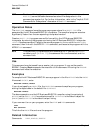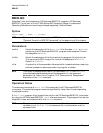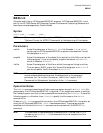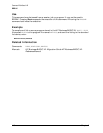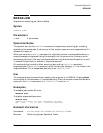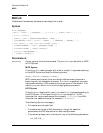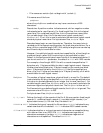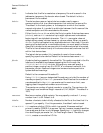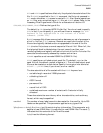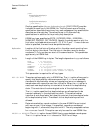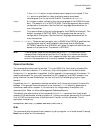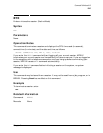
112 Chapter 2
Command Definitions A-B
BUILD
BUILD
Creates and immediately allocates a new empty file on disk.
Syntax
BUILD filereferencer
[;REC=[ [ recsize] [ ,[ blockfactor] [ ,[ F U V B ] [ ,BINARY ,ASCII ] ] ] ] ]
[ ;CCTL [ ;NOCCTL] ]
[ ;TEMP] [ ;DEV= [ dsdevice# dsdevice#device [ device] ] ]
[ ;CODE=filecode] BUILD [ ;DISC=[ [ numrec] [ ,[ numextents] [ ,initialloc] ] ] ]
[ ;RIO ;NORIO ] [ ;MSG ;CIR ;STD ;KSAMXL ;SPOOL ]
[ ;ULABEL=numlabels] [ ;KEY={ ^filereference keyinfo } ]
[ ;FIRSTREC=recnum] [ ;REUSE ;NOREUSE ]
[ ;langid={ langid langname } ]
[ { ;DEFBLK ;OPTMBLK }]
Parameters
filereference Actual name of the file to be created. The filereference can be either in MPE
of HFS Syntax.
MPE Syntax
If the filereference does not begin with a dot or a slash, it is parsed according
to the MPE Syntax and has the following format:
filename[/lockword][.groupname[.acctname]]
MPE names must contain from one to eight alphanumeric characters,
beginning with an alphabetic character. If acctname is specified, you must
have create directory (CD) access to the target group in the account. The
default groupname and acctname are the logon group and account.
HFS Syntax
If the filereference begins with a dot (.) or a slash (/), it is parsed according to
the HFS Syntax. In this case the filereference can consist of 1 to 253
characters for relative pathnames (for example, ./253chars), and 254
characters for absolute names (for example, /254chars).
The following Syntax rules apply:
• File names are not upshifted.
• File names can be up to 254 characters in length for absolute
pathnames, and 253 characters for relative pathnames.
• File names can begin with, and contain, any of the following characters:
a-z, A-Z, 0-9, _, .



